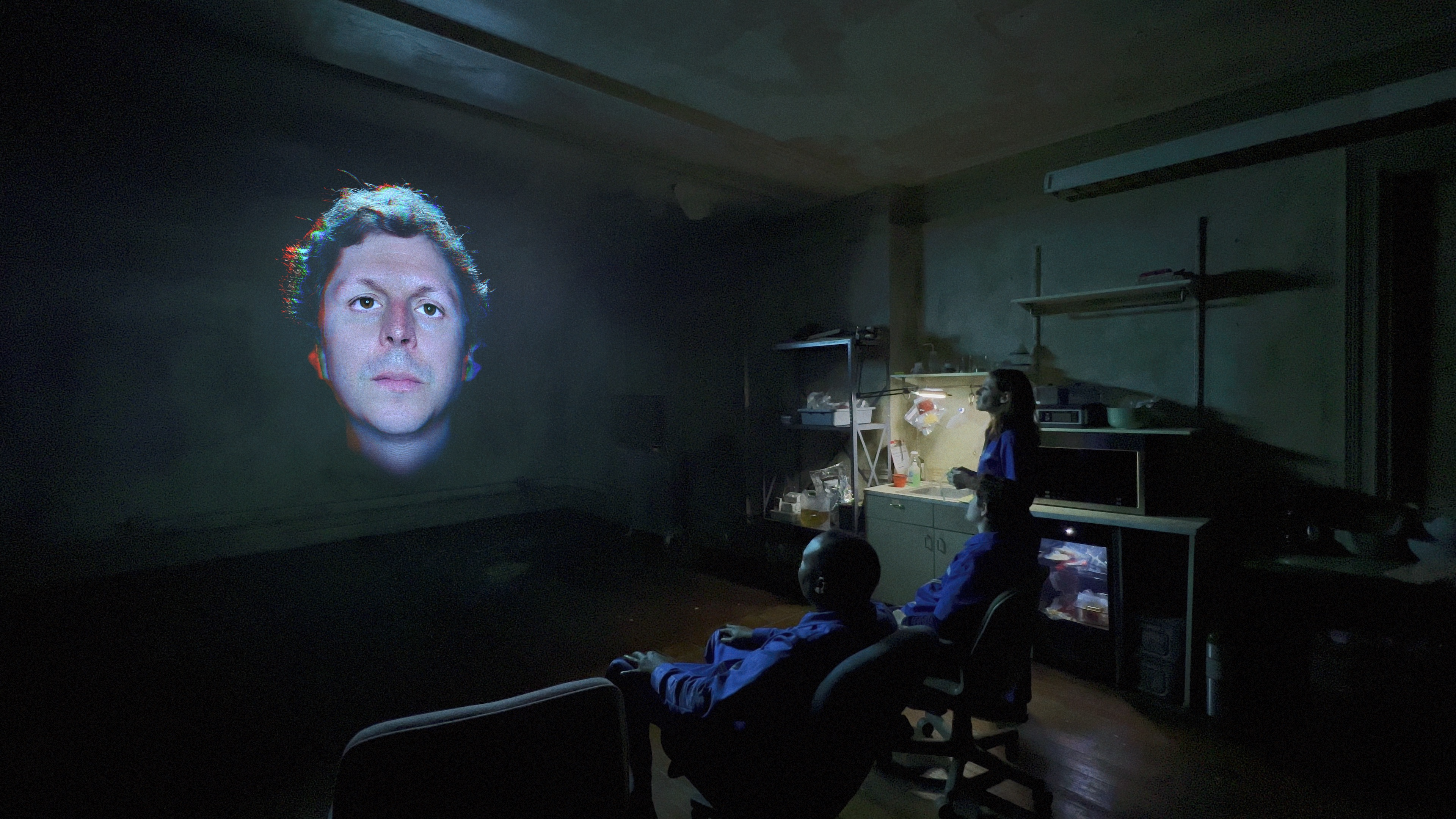What’s Up With Steven Soderbergh’s Social Satire ‘Command Z’?

Steven Soderbergh has always been known to break the mold, but few of his projects have been as unclassifiable as the elusive Command Z. This new project, made up of eight episodes but only 90 minutes in total, is a short-form sci-fi satire that seeks to address the ills of our contemporary society. It’s timely—and not just because it involves time travel.
What is Command Z about?
In a neat conceit, a trio of vaguely willing protagonists (JJ Maley, Roy Wood, Jr., and Chloe Radcliffe) are sent back in time to today, July 17, 2023, in the hopes of changing the hearts and minds of those in positions of power. Their mission has been assigned by an AI version of an Elon Musk-like billionaire named Fealty (Michael Cera), who blew himself up on a journey to Mars years prior.
Essentially, Fealty owns the patent for a washing machine-based wormhole, one that allows these three employees to travel to 2023. He also owns the patent for a nanotechnology that can tap into individuals’ brains, but the plan isn’t reliant on mind control. Rather, his three employees must infiltrate the minds of those closest to the people who have the capacity to kill the world. Whether it’s an oil baron’s daughter or a Wall Street hack’s dog, these three must use their wits and any available headspace to convince those in power to make better decisions for the planet and society.
Where can I stream Command Z?
The series is only available to stream on Extension 765, the site for Soderbergh’s production company. In spite of an overall deal with Warner Bros. that saw the filmmaker securely attached to the studio (his Max series Full Circle premiered on the platform just last week), he made Command Z independently and is distributing it the same way. It’s a novel release strategy, and one that circumvents many of the systems that the WGA and SAG are currently striking against.
How much does Command Z cost?
The series costs $7.99, but all fees are being donated to Children’s Aid and Boston University Center for Antiracist Research, according to the show’s website. This fits the theme of general do-goodery that Command Z hopes to encourage: below the series access page sits links “for local climate change actions,” “to combat disinformation” and “to run for office.” Soderbergh and his show seek to encourage action, even going so far as to pivot all interview requests to Congressman Maxwell Frost, the first Gen Z member of Congress.
What makes Command Z so weird?
The show is an experiment. Though streaming has gotten us acclimated to experiencing content in all sorts of ways, this kind of short-form series is a rarity (save for the short-lived streamer Quibi). It’s ambitious and obtuse, giving viewers small looks into this mid-apocalyptic world while limiting most of the action to a rusty old bunker; the majority of the real world is shown through grainy POV shots and newsreels projected on a wall for our characters to see. The end of each episode even gives the audience homework, recommending movies on subjects like time travel, climate change and dogs.
The show doesn’t always work (for every clever jab at a specific billionaire there’s a dud like one character saying “Okay, Gen Z-er”), and its smallness threatens to make the viewing experience monotonous. But in its best moments, Command Z highlights the power of individual action and cumulative progress. While the AI system calculates that the three protagonists improve the world by only fractions of a percent, the show makes sure to emphasize that it’s still a vital improvement. Rather than be caught up in doom and gloom, Command Z is hopeful.
